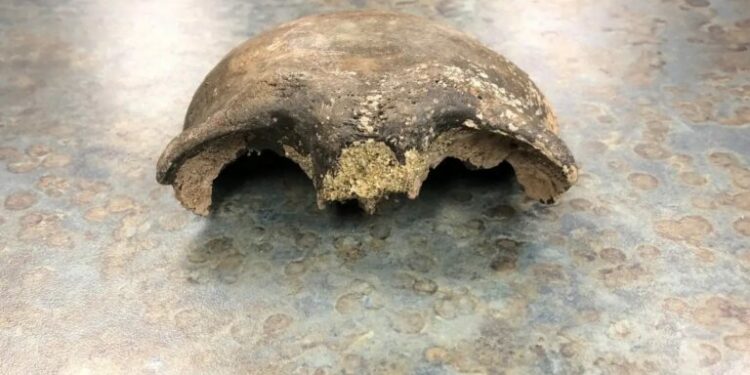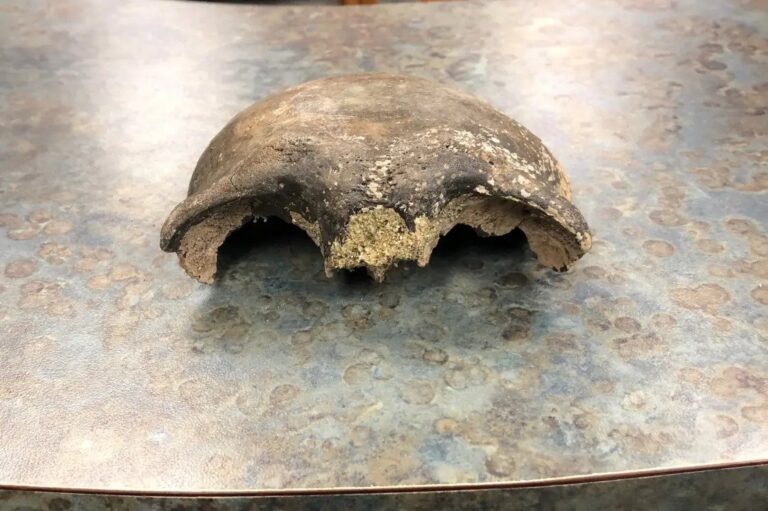According to sheriff officials, two kayakers in Minnesota discovered a human skull piece thought to be around 8,000 years old.
The interested kayakers discovered the skull part in September at Sacred Heart, roughly 100 miles west of Minneapolis, according to WCCO.
According to the Renville County Sheriff’s Office, the skull was forwarded to local officials and then to an FBI forensic anthropologist who utilized carbon dating to determine that it belonged to a young man who lived between 5,500 and 6,000 B.C.
According to the FBI anthropologist, the young man, who had suffered a significant head injury, ate a lot of fish and maize, pearl millet, and sorghum.
The sheriff’s department shared a photo of the skull on Facebook on Wednesday. Still, the post was subsequently removed when Native American groups in Minnesota complained it was “very offensive to the Native American culture,”according to the New York Times.
Sheriff Scott Hable, who could not be reached for comment early Friday, expressed surprise at the remarkable discovery.
“I don’t think anybody was anticipating the news to come,” Hable told the publication.
Hable believes the guy went through sections of what is now Minnesota during the Archaic era in North America.
According to an anthropology expert from Minnesota State University, the guy most likely subsisted on the region’s plants, deer, fish, turtles, and freshwater mussels.
“There’s probably not that many people at that time wandering around Minnesota 8,000 years ago, because, like I said, the glaciers have only retreated a few thousand years before that,” Kathleen Blue told the Times. “We don’t know much about that period.”
According to Hable, the indentation on the man’s skull indicated indications of “blunt force trauma,” but it’s unknown how he died.
However, Blue stated that she felt the incision had healed because it seemed smooth and rounded in images, indicating that it was not the cause of death.
“It would have been something he actually survived,” Blue explained. “Bone has an amazing ability to try to sort of fix itself after there’s been a traumatic injury.”
According to Blue, the skull was most likely from an ancestor of one of the area’s Native American tribes. According to Hable, it is now expected to be restored to Minnesota tribes.
“To say we were taken back is an understatement,” Hable told the Washington Post. “None of us were prepared for that.”
























